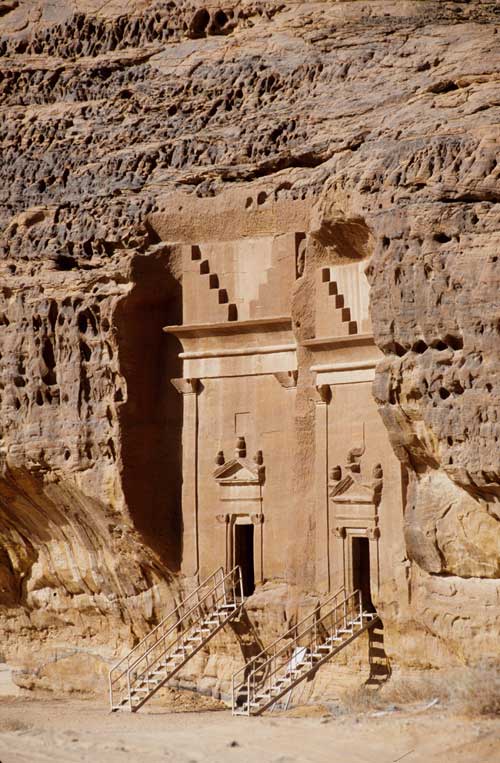Although the region in which the country stands today has an ancient history, the emergence of the Saudi dynasty began in central Arabia in 1744. That year, Muhammad ibn Saud, the ruler of the town of Ad-Dir’iyyah near Riyadh, joined forces with a cleric, Muhammad ibn Abd-al-Wahhab, to create a new political entity. This alliance formed in the 18th century remains the basis of Saudi Arabian dynastic rule today. Over the next 150 years, the fortunes of the Saud family rose and fell several times as Saudi rulers contended with Egypt, the Ottoman Empire, and other Arabian families for control on the peninsula (see First Saudi State and Second Saudi State). The third and current Saudi state was founded in the early 20th century by King Abdul Aziz Al-Saud (known internationally as Abdul Aziz Ibn Saud).
In 1902 at the age of only 22, Abdul Aziz Ibn Saud re-captured Riyadh, the Al-Saud dynasty’s ancestral capital, from the rival Al Rashid family. Continuing his conquests, Abdul Aziz subdued Al-Hasa, Al-Qatif, the rest of Nejd, and Hejaz between 1913 and 1926. On 8 January 1926 Abdul Aziz bin Saud became the King of Hejaz. On 29 January 1927 he took the title King of Nejd (his previous Nejdi title was Sultan). By the Treaty of Jeddah, signed on 20 May 1927, the United Kingdom recognized the independence of Abdul Aziz’s realm, then known as the Kingdom of Nejd and Hejaz. In 1932, the principal regions of Al-Hasa, Qatif, Nejd and Hejaz were unified to form the Kingdom of Saudi Arabia.
Abdul Aziz’s military and political successes were not mirrored economically until vast reserves of oil were discovered in March 1938. Development programmes, which were delayed due to the onset of the Second World War in 1939, began in earnest in 1946 and by 1949 production was in full swing. Oil has provided Saudi Arabia with economic prosperity and a great deal of leverage in the international community.
Prior to his death in 1953 Abdul Aziz, aware of the difficulties facing other regional absolute rulers reliant on extended family networks, attempted to regulate the succession.
Saud succeeded to the throne on his father’s death in 1953. However, by the early 1960s the Kingdom was in jeopardy due to Saud’s economic mismanagement and failure to deal effectively with a regional challenge from Egyptian president Gamal Abdel Nasser. As a consequence Saud was deposed in favour of Faisal in 1964.
Intra-family rivalry was one of the factors that led to the assassination of Faisal by his nephew, Prince Faisal bin Musa’id, in 1975. He was succeeded by King Khalid until 1982 and then by King Fahd. When Fahd died in 2005, his half-brother Abdullah ascended to the throne.

 The average summer range in July is 27° to 43 °C (81° to 109 °F) in Riyadh and 27° to 38 °C (80° to 100 °F) in Jeddah. Nighttime temperatures in the central deserts can be famously chilly even in summer, as the sand gives up daytime heat rapidly once the sun has set. Annual precipitation is usually sparse (up to 100 mm or 4 inches in most regions), although sudden downpours can lead to violent flash floods in wadis. Annual rainfall in Riyadh averages 100 mm (4 inches) and falls almost exclusively between January and May; the average in Jeddah is 54 mm (2.1 inches) and occurs between November and January.
The average summer range in July is 27° to 43 °C (81° to 109 °F) in Riyadh and 27° to 38 °C (80° to 100 °F) in Jeddah. Nighttime temperatures in the central deserts can be famously chilly even in summer, as the sand gives up daytime heat rapidly once the sun has set. Annual precipitation is usually sparse (up to 100 mm or 4 inches in most regions), although sudden downpours can lead to violent flash floods in wadis. Annual rainfall in Riyadh averages 100 mm (4 inches) and falls almost exclusively between January and May; the average in Jeddah is 54 mm (2.1 inches) and occurs between November and January.